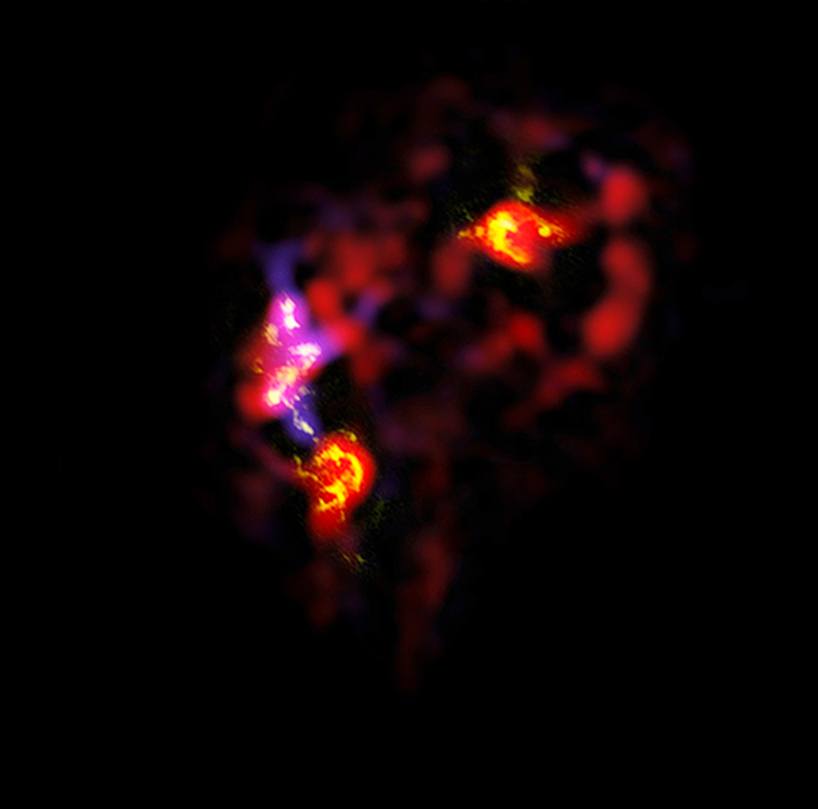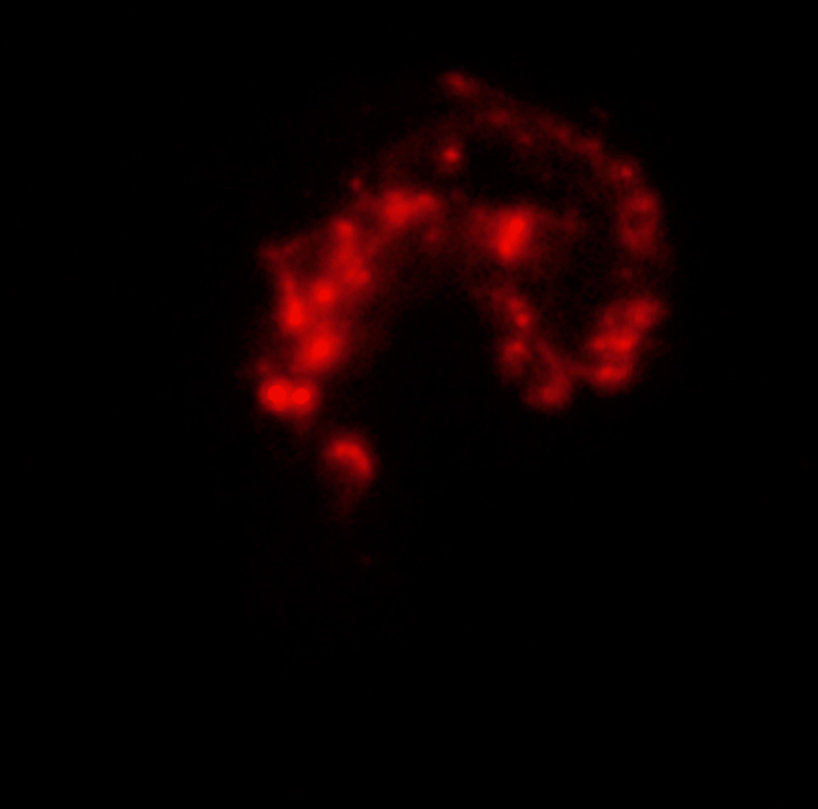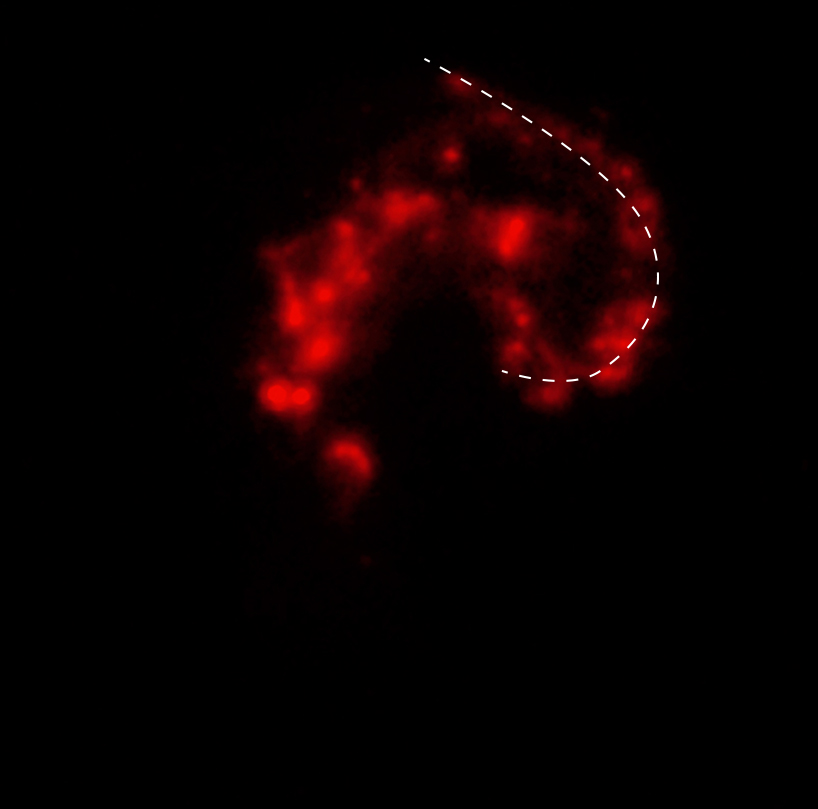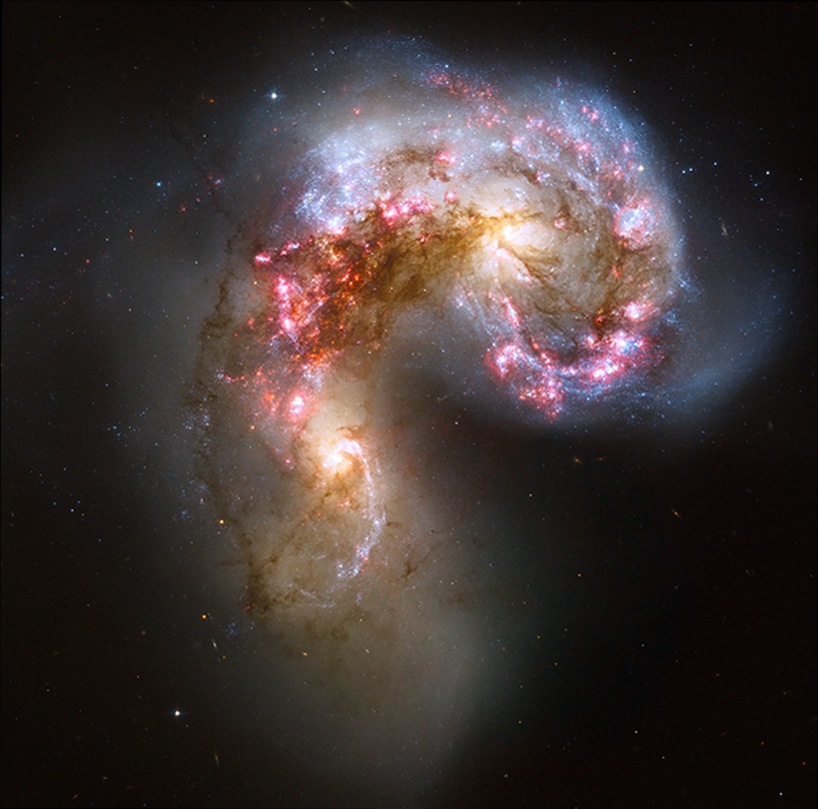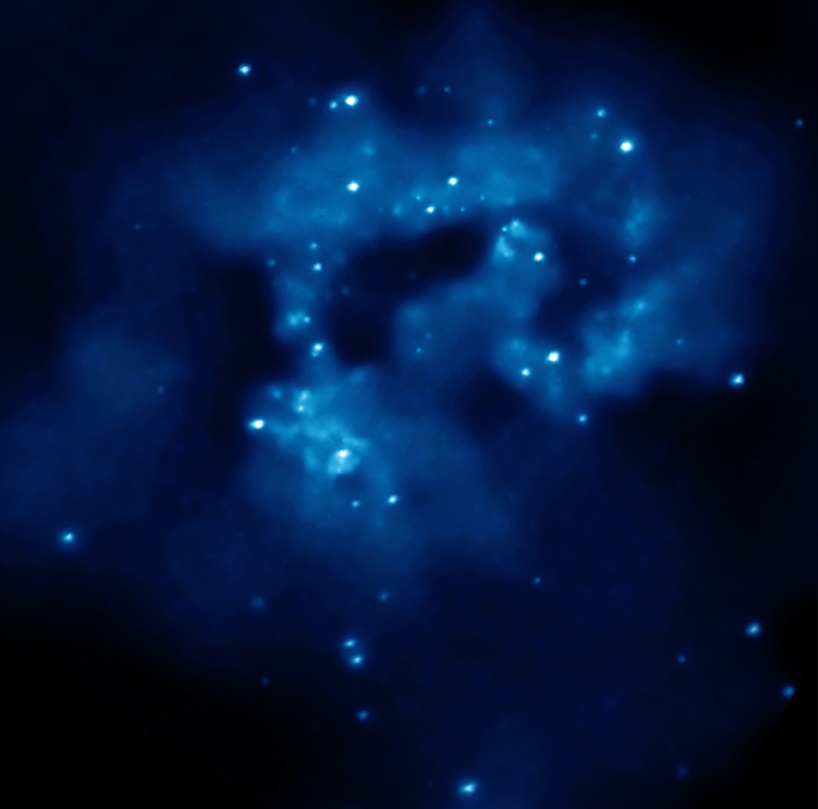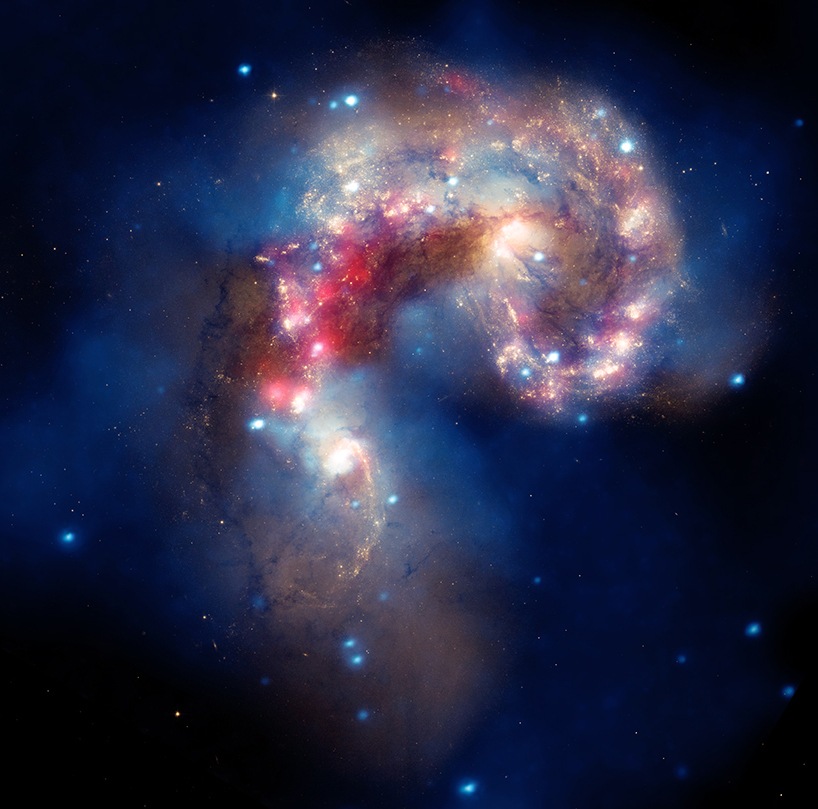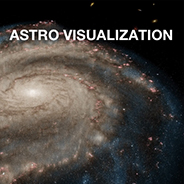Interactive Overview
Slider Interactive: A series of images showing two interacting galaxies known as the Antennae in different wavelengths of light. Below the caption is a horizontal slider bar with five labeled stops and a solid white circle. Dragging the white circle right and left along the slider bar causes the image, labels, and caption to change. The change occurs gradually as one image, along with its associated captions and labels, fades out and the next fades in. A toggle button to the upper right of the image turns the image labels off and on. Labels are in the form of text with arrows pointing to specific features in the image. Other labels are graphic overlays.
Slider Stops
From left to right, the slider stops are labeled: Radio, Infrared, Visible, X-ray, and Multi-wavelength.
Summary of Slider Stops
Sliding left to right reveals the following:
- “Radio” stop shows the Antennae as bright and dull blotches of red, orange, purple, and pink.
- “Infrared” stop shows the galaxies as fuzzy red, swirl-like blotches.
- “Visible” stop shows the galaxies in vibrant colors and detail, including regions of gas, dust, and stars. This is the initial image shown when the interactive is loaded.
- “X-ray” stop shows the galaxies as broad, cloudy blue areas with bright, fuzzy blue dots scattered throughout.
- “Multi-wavelength” stop shows a composite of all the interactive’s wavelengths combined.
Stop 1: Radio
Image Description: Radio
Radio light from the Antennae galaxies is shown in yellow, orange, red, pink, purple, and white on a black background. There are three bright, irregular-shaped blotches along with a number of dim fuzzy red blobs. Two somewhat circular bright orange and yellow blotches, one in the upper right and one at the lower left, have a similar size, shape, and coloring. A third, larger, and more irregular-shaped blotch in the middle left is red, pink, purple, and white. A broad line of fuzzy red blobs forms a vague arc around the orange splotch at the upper right.
Labels: Radio
There are three text labels. The two bright orange and yellow circular splotches, at upper right and lower left, are each labeled “Galaxy center.” The more irregular, red, pink, purple, and white splotch in the middle is labeled “Colliding gas.”
Caption: Radio
Areas of dense gas glow brightly in the crowded galactic centers and the region where the two galaxies meet.
Stop 2: Infrared
Image Description: Infrared
Infrared light emitted by the Antennae galaxies is shown in fuzzy red on a black background, forming a tight, inverted S shape on its side. The red color varies in intensity along the curves, with the brightest areas corresponding to the bright colorful splotches in the “Radio” stop.
Labels: Infrared
There are two text labels and one graphic overlay. A bright red area on the left is labeled “Warm dust.” This corresponds to the area labeled “Colliding gas” in the “Radio” stop. A curved dashed white line traces the arc of red on the right, forming a hook-shape. This is labeled “Warped spiral structure.”
Caption: Infrared
Warm dust glows where new stars are forming, tracing the distorted shapes of the galaxies’ former spiral arms.
Stop 3: Visible
Image Description: Visible
Visible light emitted by the Antennae galaxies is shown in various colors, including pink, blue, brown, and white. The galaxies appear much larger and much more detailed than in the “Radio” and “Infrared” stops. The overall shape of the two colliding galaxies resembles a curled-up shrimp, with one of the galaxy’s main spiral arm toward the top right and the other galaxy’s main spiral arm toward the bottom left. The galaxy toward the top right appears larger than the galaxy to the lower left. The top galaxy is also brighter in color, with a haze of bright white-blue points, dark brown dust lanes, and glowing regions of pink peppered along the spiral arm. This galaxy’s center has a bright yellow glow. The lower left galaxy has a bright yellow glow with no white-blue haze or glowing regions of pink. The region where the two galaxies are colliding is toward the top left. Clumps of dark brown with splotches of pink form this main collision area. A soft white glow surrounds the exterior edges of the colliding galaxy pair, and small white points are scattered lightly across the image.
Labels: Visible
There are three text labels. A bright yellow-white area in the top right of one galaxy is labeled “Galaxy center.” Similarly, a bright yellow-white area in the bottom left of the other galaxy is labeled “Galaxy center.” The dark brown material and bright pink clusters of light between the two galaxies’ centers are labeled “Gas collision.” These labels point to the same locations as those in the “Radio” stop.
Caption: Visible
The gas of two spiral galaxies collides, sparking bright pink areas of star formation.
Stop 4: X-ray
Image Description: X-ray
X-ray light from the Antennae galaxies appears as an irregular, hazy blue clouds of varying intensity, with bright blue-white points of light scattered throughout. The areas that are brightest blue correspond to the bright galaxy centers and the bright galaxy collision zone seen in the “Radio,” “Infrared,” and “Visible” stops. Several fairly distinct dark regions correspond to brown areas in the “Visible” stop. The cloudy blue material extends outward, generally decreasing in intensity toward the edges.
Labels: X-ray
There is one text label. A relatively bright blue area near the center of the lower galaxy is labeled “Gas heated by exploded stars.”
Caption: X-ray
Bright points highlight a neutron star or black hole that is pulling gas from a companion star.
Stop 5: Multi-wavelength
Image Description: Multi-wavelength
This is a composite of the other four images, with the different forms of light emitted by the Antennae galaxies shown in different colors. The colors are the same as in the individual images: radio in yellow, orange, red, pink, and purple; infrared in red; visible in pink, blue, brown, and white; and X-ray in blue. The structures shown in the previous stops are still apparent, but they combine to form a more complex structure. The visible light structure highlighting the distorted spiral arms with bright galaxy centers and glowing gas is most apparent. The galaxy centers, galaxy collision zone, and upper spiral arm are brighter in this image than they are in any of the other images.
Labels: Multi-wavelength
There are three text labels. A bright blue-white point toward the top center is labeled “X-ray binary star.” This star is also obvious in the “X-ray” stop, and appears as a fuzzy dim red spot in the “Visible” stop, but is not shown in the “Radio” or “Infrared” stops. The collision zone region between the two galaxies is labeled “Star factories.” This is the same region that is labeled “Colliding gas” in the “Radio” stop, “Warm dust” in the “Infrared” stop, and “Gas collision” in the “Visible” stop. A bright region along the spiral arm of the top galaxy is labeled “Cluster of young stars.”
Caption: Multi-wavelength
The life cycle of massive stars is displayed in one image, from formation in gas clouds to afterlife as compact X-ray sources.
